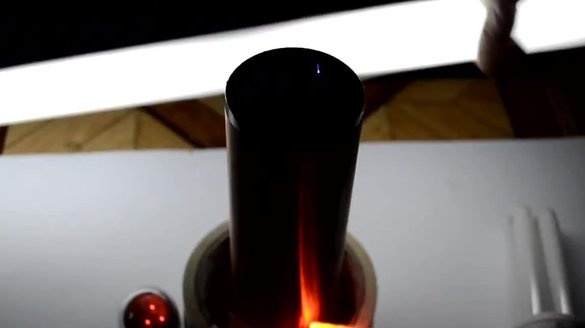The Tesla coil is probably familiar to many from computer games or feature films. If anyone doesn’t know that this will be clarified, this is special devicewhich creates high voltage high frequency. Simply put, thanks to the Tesla coil, you can hold a spark in your hands, light a bulb without wires, and so on.
Before you start manufacturing our coil, we suggest watching a video
We will need:
- 200 m of copper wire with a diameter of 0.1 to 0.3 mm;
- wire with a diameter of 1 mm;
- 15-30 cm of a plastic sewer pipe with a diameter of 4 to 7 cm;
- 3-5 cm sewer pipe with a diameter of 7 to 10 cm
- transistor D13007;
- radiator for the transistor;
- 50 kΩ variable resistor;
- a constant resistor of 75 ohms and 0.25 watts .;
- a power source of 12-18 volts and a current of 0.5 per ampere;
- soldering iron, solder and rosin.
A long piece of pipe is necessary for the secondary winding, and a short one for the primary. If it is not possible to find a pipe of this diameter, then you can replace it with ordinary adhesive tape, as the author does. Copper wire can be obtained from old transformers or simply purchased on the market.
With the materials sorted out, you can start assembling. The assembly, according to the author of the video, it is better to start not with the primary but with the secondary coil, that is, a long pipe. To do this, take the pipe, which will now be the frame and fix the wire on it.
Now you need to wind about 1000 turns, making sure that there are no overlaps, large distances between the turns. The author claims that this is not as difficult as it might seem at first glance, and if you wish, you can finish the work in an hour and a half.
When the winding of the secondary frame is over, it is advised to cover it with varnish or simply paste over with tape so that the structure does not deteriorate over time.
Now you can start the primary winding. It becomes an ordinary wire with a diameter of 1 mm. You can use absolutely any wire. You need to wrap about 5-7 turns.
Next, we have to collect a simple scheme, the figure of which we provide below.
We mount the transistor D13007 on the radiator, then solder the wire going from the secondary winding to one contact of the transistor.
We solder a constant resistor to the same contact.
At the second end of the constant resistor, solder the variable resistor.
Now we take the primary winding, shove the secondary into it and solder the two wires that go from it to the variable resistor and resistor D13007.
We connect the plus and minus wires to the same resistors and connect our Tesla coil to the source.If the desired effect is not observed, then you just need to swap the wires coming from the primary winding.

